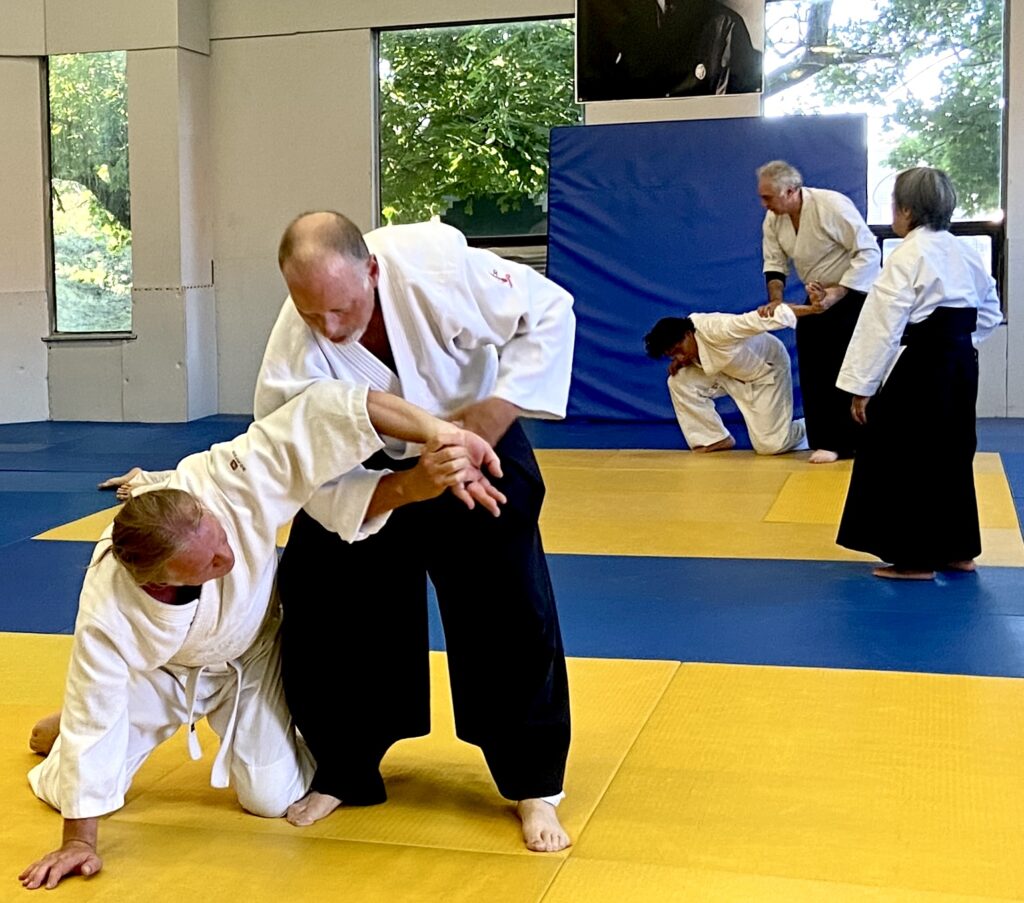
Somebody once asked me whether I would be his Aikido “coach.” He saw Aikido as just another collection of mechanical techniques that could be added on to whatever it was he thought he already knew.
Aikido goes far beyond technique.
Of course, we have forms such as the sankyo wrist lock that we teach in very specific ways, that we require to be effective and that our students must perform correctly in tests. But even in Aikido, there are dozens of ways of doing sankyo. Many teachers that I respect deeply do it somewhat differently than I do.
I have heard that O-sensei seldom performed techniques exactly the same way twice — always adapting to his ukes on the fly and teaching his students what he felt they needed to know, rather than by rote. He disapproved of kata-style training and spirituality was core to his Aikido.
Aikido is about community and self-development. There is something deeper behind Aikido technique, physically and psychologically. If all you learn from Aikido is how to twist somebody’s wrist painfully, I don’t think you are putting your time to good use. Strong Aikido technique reflects having learned something deeper.
Every martial art has its target students. For most people who commit to Aikido, self defence is just one circle on the Venn diagram.
I don’t have the slightest intention of denigrating any other martial path. They each have their value and purpose. I have practised Jiu-jitsu, Taekwondo and Karate personally and respect them all, been strengthened by them all and deeply admired my sensei. But mostly they are following different paths from Aikido – sometimes focusing on self-defence, sometimes sports, sometimes culture. They attract students aligned with their goals.
Aikido is constant self-refinement, lifelong training to be a better, stronger person.
Aikido is not a way to learn joint locks. Joint locks are a way to learn Aikido.